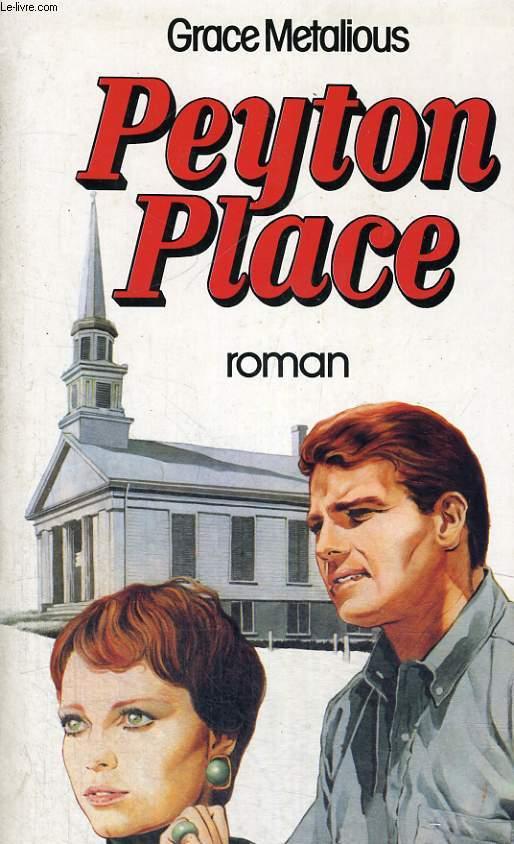TW Column by Emily Toth
Ode to Peyton Place—and Family Fuckups
Suppose there’s a gadget called the Family Dysfunction Assessment Meter that rates portrayals of families according to qualities like stability, love, caring, and lack of strangling (the usual way the ancient Egyptian pharaohs got rid of their siblings).
 The F-DAM extremes might be Leo Tolstoy’s “All happy families are alike” from Anna Karenina versus Philip Larkin’s most famous lines in “This Be The Verse”:
The F-DAM extremes might be Leo Tolstoy’s “All happy families are alike” from Anna Karenina versus Philip Larkin’s most famous lines in “This Be The Verse”:
They fuck you up, your mum and dad.
They may not mean to, but they do.
No matter how they rate on the meter, you do need Mom and Dad to fuck you up—or you don’t have much of a story. Oedipus is perhaps the most obvious example of Mom and Dad’s… (I know there’s a crude joke there somewhere). But almost all the world’s great narratives contain family fuckups. Even Moby Dick, which I consider horrifically boring, has a kind of family dynamic with the crazy dad and cringing children.
My all-time favorite family fuckup book is Peyton Place by Grace Metalious, the novel I read at an impressionable age and that I like to think corrupted me forever. Unlike most kids, I read the book openly, because my parents were dangerously liberal by the standards of the day, and they did not mess me up. I’m the rare bird who grew up in a happy family.
That wasn’t true, though, of Peyton Place’s author, Grace Metalious.
I’m the only one who’s investigated her life—in my 1981 biography Inside Peyton Place: The Life of Grace Metalious—and the only one who’s apt to do so. Most people who knew Grace Metalious have died off, and even her very patient widower finally decided, at age 81, that he didn’t want to be interviewed anymore about the marriage that ended half a century ago. His children had been bullied for much of their young lives because their mom had written a “dirty book.”
What wasn’t noticed is that Peyton Place is a profound book, especially for young women growing up in troubled families.
 You can always find articles by literary critics saying “Oh, wow, Peyton Place isn’t half bad.” (I’m reminded of the band Babes in Toyland, who were thrilled when Beavis and Butt-Head proclaimed that their album “didn’t suck.”) Two “Peyton Place doesn’t totally suck” pieces recently appeared in the New York Times Book Review (“Bookends” commentary by Thomas Mallon and Anna Holmes for “What’s It Like Reading Peyton Place Today?”). Another somewhat smirky piece appeared in Vanity Fair in 2006 for the book’s fiftieth anniversary (“Peyton Place’s Real Victim” by Michael Callahan).
You can always find articles by literary critics saying “Oh, wow, Peyton Place isn’t half bad.” (I’m reminded of the band Babes in Toyland, who were thrilled when Beavis and Butt-Head proclaimed that their album “didn’t suck.”) Two “Peyton Place doesn’t totally suck” pieces recently appeared in the New York Times Book Review (“Bookends” commentary by Thomas Mallon and Anna Holmes for “What’s It Like Reading Peyton Place Today?”). Another somewhat smirky piece appeared in Vanity Fair in 2006 for the book’s fiftieth anniversary (“Peyton Place’s Real Victim” by Michael Callahan).
These pieces all have a certain tone of slumming: Well, I wallowed in the muck and only got partly slimed, so I must be cool. They don’t know—or say—just how cool and daring and brave Grace Metalious and her publisher Kitty Messner were, putting out that book in the middle of the 1950s—bland, picket-fence white, we’re-all-happy-in-togetherness land. It was like farting in church.
Grace Metalious was a teacher’s wife with three kids when her novel was published. It was a distillation of angry observations from her life as a poor Franco-American girl growing up among mill workers in New Hampshire. Her father left; her mother struggled; her grandmother struggled. They mostly weren’t very nice to each other, but who is, when you’re half-starved?
Grace’s drive to write set her apart. From an early age, she was making up stories in her aunt’s bathtub (her version of a room of one’s own). She was pregnant and married at eighteen, and a bad mom: she locked her kids out of the apartment, in the snow, so she could write the novel she worked on for seventeen years. Neighbors took care of her children and wiped their noses. She got herself a sleazy agent who got her a terrific publisher, a powerful and not-very-closeted lesbian. Grace Metalious’s scandalous novel was an international bestseller, and her life was never the same.
Unable to cope with fame, she drank herself to death before she was forty.
Yet, Peyton Place is an extraordinary portrayal of family dynamics. It takes place in a small New England town with haves, have nots, and almost no nuclear families. The richest man in town is a widower and exploiter of everyone. The poorest are his victims, the shack dwellers. In between is Connie, a dress shop owner who claims her husband is dead—to conceal the fact that she had a daughter out of wedlock, a daughter she resents deeply.
Connie is rescued when the sexy high school principal frees her from her sexual inhibitions and eventually marries her. By the end of the book, they have a nuclear family—and her daughter Allison is on her way to becoming a bestselling author.
Other families in the town of Peyton Place don’t fare so well. Many of the men are drunks, and most of the women are snobs. There’s a mother who plies her “psychoneurotic” (gay) son with enemas—at a time when gay people mostly didn’t appear in American literature. Some of the happiest people are single, including the high school English teacher.
But the family everyone remembers best is the Crosses, the shack dwellers with the beautiful daughter Selena, her half-crazed mother, and the stepfather who’s praised for being steady and paying his bills—while for years he’s been raping Selena. She winds up killing him and is exonerated, years before the battered women’s defense was named or used. A kindly doctor performs an abortion for her, at a time when abortion was illegal everywhere. Dr. Swain’s self-defense is still one of the most eloquent proclamations I’ve ever read for women’s right to choose:

I am protecting life, this life, the one already being lived by Selena Cross.
For its portrayal of family dastardliness, Peyton Place would rate high on the F-DAM scale. It certainly shows, through cautionary tales, things not to do if you want to live and be well in an American family: Don’t beat, rape, steal, or lie; don’t ruin reputations; don’t be a hypocrite or a tool. Even then, some of your relatives will hate you and want to bring you down.
Grace Metalious knew about the harm that family meanness, when it’s secret, can do to the young, the female, the vulnerable. Peyton Place is a book about women in families that do fuck you up—and much of what’s called “family values” today, half a century later, is about the same stuff.
But Philip Larkin, a quirky and reclusive poet, had the most effective solution to the problem of dysfunctional families. As he ends “This Be The Verse”:
And don’t have any kids yourself.
Publishing Information
- “This Be The Verse” by Philip Larkin, originally published in 1971 in the New Humanist and in his collection High Windows (Faber & Faber, 1974; also in Collected Poems, Farrar, Straus and Giroux, 2001).
- Peyton Place by Grace Metalious (Julian Messner, 1956).
- Inside Peyton Place: The Life of Grace Metalious byEmily Toth (Doubleday, 1981; University Press of Mississippi, 2000).
- “What’s It Like Reading Peyton Place Today?” by Thomas Mallon and Anna Holmes, New York Times Book Review, March 4, 2014.
- “Peyton Place’s Real Victim” by Michael Callahan, Vanity Fair, March 2006.
 Emily Toth is a contributing writer at Talking Writing, where her column “Nothing but the Toth” appears regularly. She’s also “Ms. Mentor" at the online Chronicle of Higher Education. For a recent Ms. Mentor column, see “My Boss Is Ungrammatical.”
Emily Toth is a contributing writer at Talking Writing, where her column “Nothing but the Toth” appears regularly. She’s also “Ms. Mentor" at the online Chronicle of Higher Education. For a recent Ms. Mentor column, see “My Boss Is Ungrammatical.”
As TW’s doyenne of advice, Emily is the judge for the 2014 Talking Writing Prize for Writing Advice. Please go to the TW Contests page for information about how to enter. Deadline: October 1, 2014.
